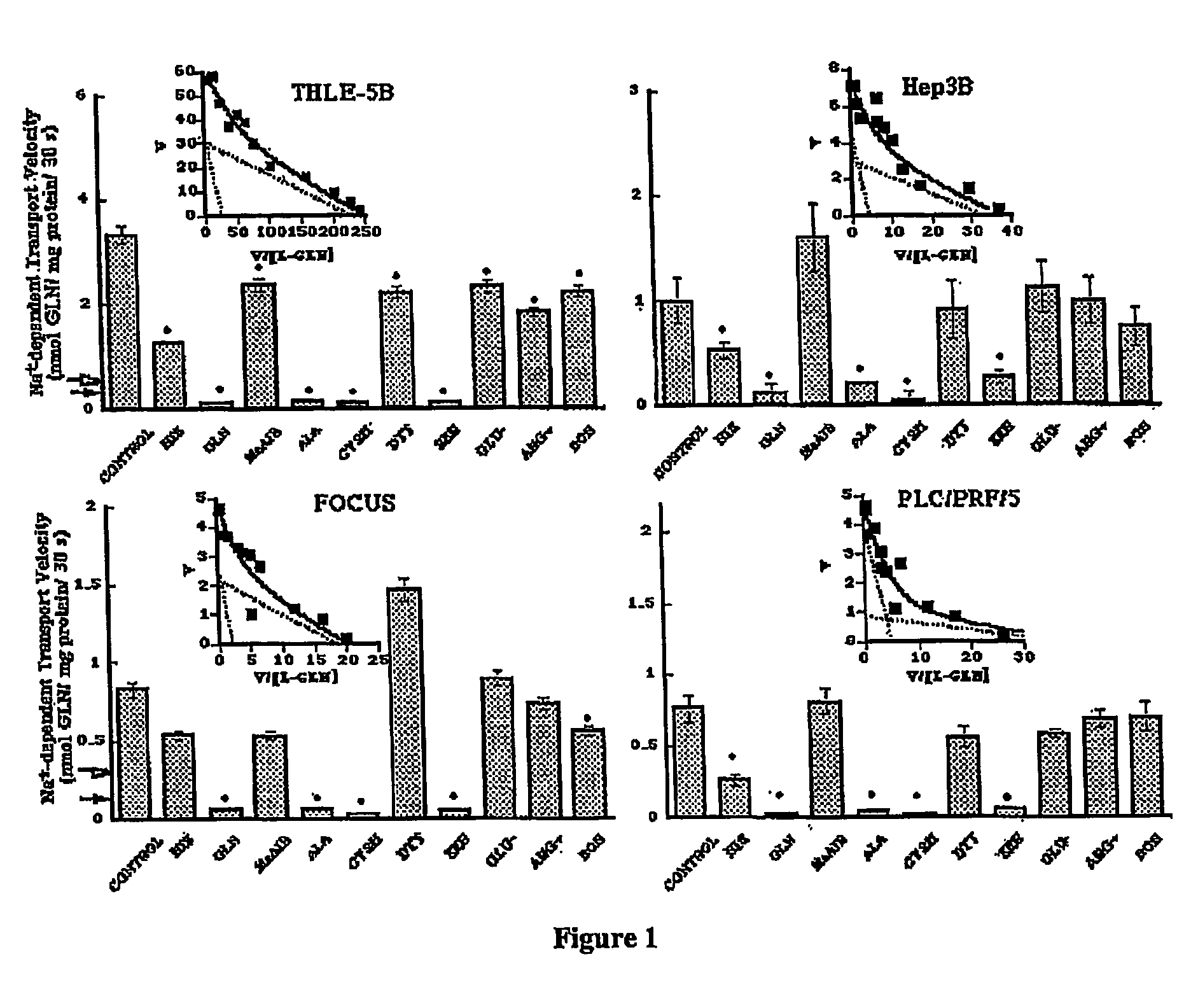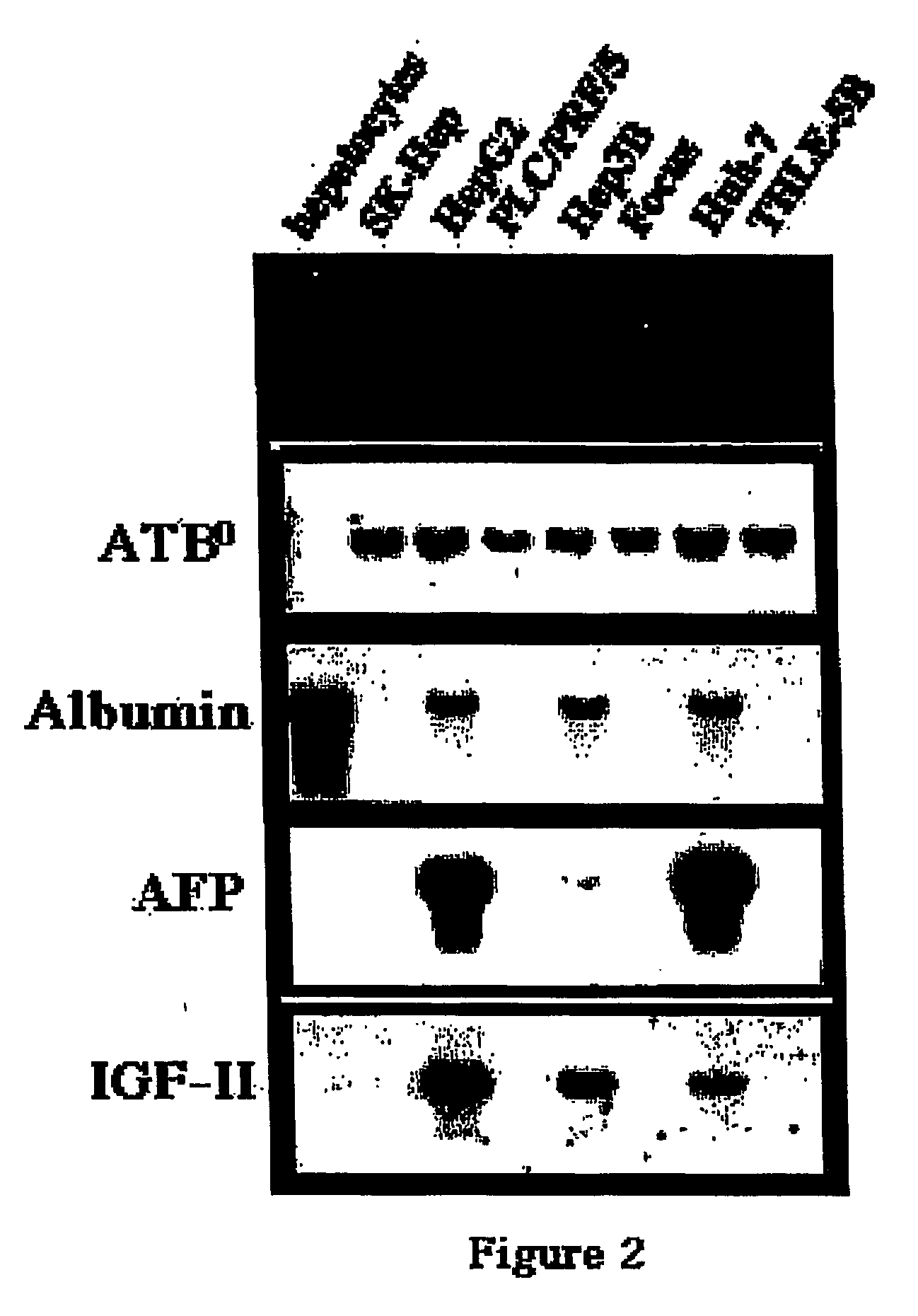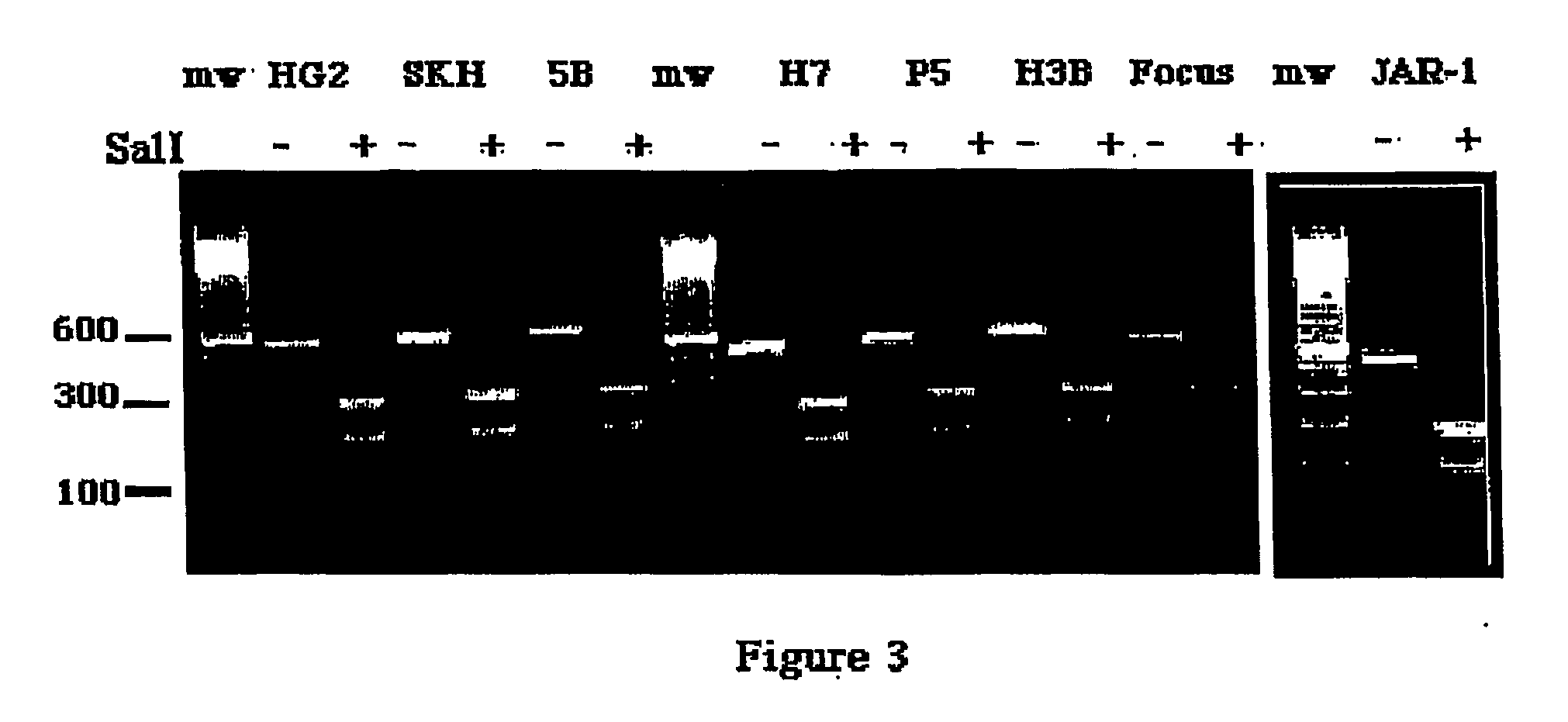Compositions and methods of treating and diagnosing hepatoma
a technology of hepatoma and composition, applied in the field of compositions useful for the selective killing of carcinoma cells, can solve the problems of inability inability to effectively treat hcc other than resection or transplantation, and inability to conduct studies to determine the ubiquity of system asc-mediated glutamine transport. , to achieve the effect of reducing the uptake of glutamine, facilitating the transfer of poly
- Summary
- Abstract
- Description
- Claims
- Application Information
AI Technical Summary
Benefits of technology
Problems solved by technology
Method used
Image
Examples
example 1
Selective Expression of ATB0 in Hepatocarcinoma Cells
Materials and Methods
[0061] Cell Lines. The human hepatoma cell lines utilized in these studies were PLC / PRF / 5 (34), SK-Hep (20), Hep3B (1) (American Type Culture Collection (ATCC), Rockville, Md.), Huh-7 (41) (from Dr. Jake Liang, Massachusetts General Hospital), FOCUS (28) (from Molecular Hepatology Laboratories, Massachusetts General Hospital Cancer Center) and the hepatoblastoma HepG2 (1), also from ATCC. A nontumorigenic human liver epithelial cell line termed THLE-5B was generated by immortalization with SV40 virus and was kindly provided by Dr. Curtis Harris at the National Cancer Institute (45). The JAR-1 human choriocarcinoma cell line from which the ATB0 cDNA was originally isolated was obtained from ATCC. All cells were maintained in Dulbecco's Modified Essential Medium (DMEM, 4.5 mg / ml D-glucose)+2 mM L-glutamine, 100 units / ml penicillin G, 100 μg / ml streptomycin and 10% FBS (all from Gibco / BRL, Gaithersburg, Md.).
[...
example 2
Induction of Apoptosis of Hepatocarcinoma Cells
Materials and Methods
[0093] Cell Culture. The human hepatoma cell line SK-Hepl (American Type Culture Collection (ATCC), Rockville, Md.) was maintained at 37° C. in a humidified atmosphere of 5% CO2 / 95% air in Dulbecco's Modified Eagle Medium (DMEM, 4.5 mg / ml D-glucose) supplemented with 10% fetal bovine serum (FBS), 2 mM L-glutamine, 100 U / ml penicillin G and 100 μg / ml streptomycin (all from Invitrogen Life Technologies, Carlsbad, Calif.). SK-Hep cells stably transfected with both pSwitch and pGene / V5-HisATB0 (described below) were maintained in growth media supplemented with 300 μg / ml hygromycin B and 200 μg / ml Zeocin™ (both from Invitrogen Life Technologies). For glutamine deprivation studies, cells were grown in DMEM±2 mM L-glutamine, containing 10% dialyzed FBS (dFBS), 100 U / ml penicillin G, 100 μg / ml streptomycin and supplemented with hygromycin B and Zeocin™ in the case of stably transfected clones.
[0094] Inducible Antisense E...
example 3
siRNAs Modulate ASCT2 Activity of Hepatoma Cells
[0119] siRNAs that are specific to ASCT2 were designed using several known algorithms and then checked for specificity. Four (4) siRNAs, i.e., siRNA1 (which comprises SEQ ID NO:3), siRNA2 (which comprises SEQ ID NO:4), siRNA3 (which comprises SEQ ID NO:5), and siRNA4 (which comprises SEQ ID NO:6), were synthesized. SK-Hep cells were transfected with 50 nM concentration of any one of siRNA1, 2, 3 or 4 using Lipofectamine™ 2000 (Invitrogen™ life technologies) based on the protocols set forth in Gitlin, L., Karelsky, S., and Andino, R. (2002), Nature 418: 430-434; Yu, J. Y., DeRuiter, S. L., and Turner, D. L. (2002), Proc. Nat. Acad. Sci. USA 99:6047-6052; and “Transfecting siRNA into Mammalian Cells Using Lipofectamine™ 2000,” Form No. 18057N, Doc. Rev. 102802 by Invitrogen Corporation (2002), which are herein incorporated by reference. At 24 hours and at 48 hours, RNAs were extracted from the transfected cells and the expression of ASC...
PUM
| Property | Measurement | Unit |
|---|---|---|
| Composition | aaaaa | aaaaa |
| Transport properties | aaaaa | aaaaa |
Abstract
Description
Claims
Application Information
 Login to View More
Login to View More - R&D
- Intellectual Property
- Life Sciences
- Materials
- Tech Scout
- Unparalleled Data Quality
- Higher Quality Content
- 60% Fewer Hallucinations
Browse by: Latest US Patents, China's latest patents, Technical Efficacy Thesaurus, Application Domain, Technology Topic, Popular Technical Reports.
© 2025 PatSnap. All rights reserved.Legal|Privacy policy|Modern Slavery Act Transparency Statement|Sitemap|About US| Contact US: help@patsnap.com



